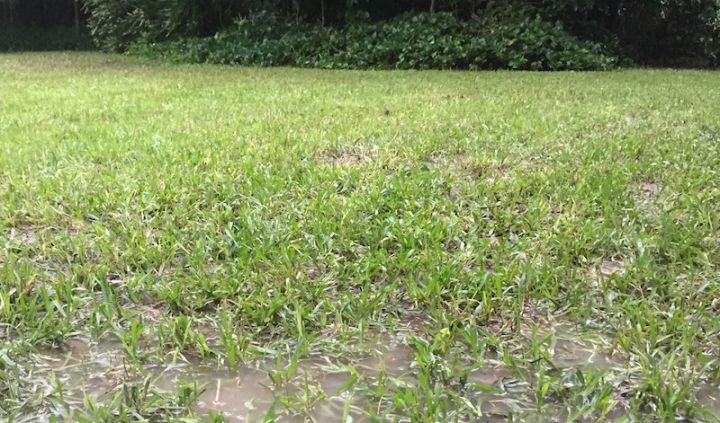Does Soggy Soil Damage Your Lawn and Garden?
June 1, 2015 | By webadmin
Everyone has been shocked at the amount of rainfall we’ve received in Dallas this spring. And while we never complain about getting much needed rain in Texas, we can probably all agree that we got a bit more than we bargained for. So much rain in such a short time has resulted in floods and soils that are well past their saturation point. What does that mean for our lawns and landscapes?

Soil is at its maximum water capacity.
Soggy soil suffocates plants
When soil is soggy and over-saturated plant roots just can’t get what they need. Did you know roots need to breathe? Oxygen is a key part of soil and plant root health. Healthy soil retains just enough moisture, allows excess moisture to drain away, and helps plants take in oxygen and nutrients. When soil becomes over saturated, it basically suffocates plant roots. Anaerobic conditions can then develop, which creates the perfect environment for root rot diseases. That’s exactly what has happened in many lawns and landscapes around Dallas and we’re now seeing an explosion of fungal diseases. Large trees are even falling all over due to soil heaving from excess water.
Heavy rain causes chlorosis
When your lawn or landscape plants can't take up nutrients like Nitrogen or Iron, the resulting nutrient deficiency is called “Chlorosis”. Heavy and continual rainfall can leach away these important nutrients from your soil, leaving plants very hungry. When plants are lacking Nitrogen or Iron, new growth will lose color, turning a pale green. Without these key nutrients plants can’t photosynthesis.
The problem can be compounded by the fact that plants will experience a growth spurt with the additional rainfall. That growth spurt, plus a lack of soil nutrients, can make the resulting chlorosis even worse. Now, when the plants are growing at a quicker rate because of all the rain, is when they are most susceptible to nutrient deficiencies. Lawns grown in less than stellar conditions such as in compacted soil or shade, are also much more susceptible to chlorosis and other diseases.
Heal your soil, heal your plants
While we can’t stop the rain, we can take some preventative measures to help heal your plants. Core aeration in lawns is a good way to get oxygen back to the root zone. Core aeration involves pulling out small plugs of soil from the lawn. This will aid drainage, stimulate microbial activity and help lawn roots “breathe” again.
Because lawns and landscape plants may be nutrient deficient after the heavy rains, your property may need additional fertilization to get things back on track. If you see chlorotic leaves on your lawn, shrubs or trees, that’s the signal that additional fertilization is required.
Soggy soil slows down maintenance
If you’re on our maintenance plan, you may have noticed some delays in service. The heavy rain not only creates challenges for landscape plants, but also landscape equipment! If you’ve experienced a slowdown in service, know that as things dry up, we’ll be back on schedule.
